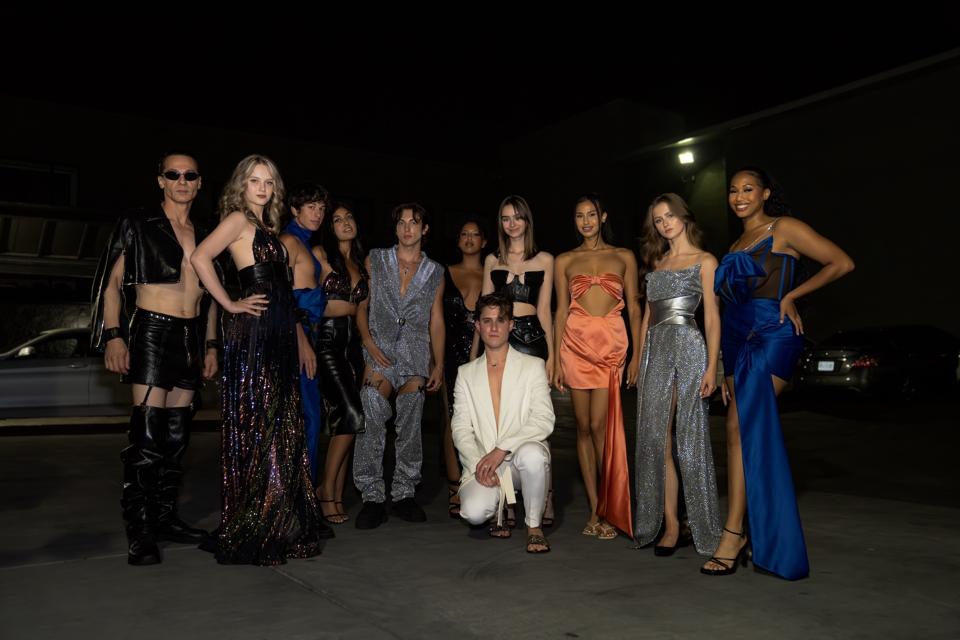Because it’s important to me that people understand something needn’t be digital or mechanical to be technological—and by extension, technology needn’t be digital or mechanical to be accessibility—I’ve dedicated a good bit of coverage over the years in this space to adaptive clothing and varying body types. The natural inclination is to think of assistive technologies as computer-based software features, and while it’s true such a view predominates, the fact is things like snap buttons, Velcro, and more are all pieces of analog technology that make dressing more accessible to disabled people. Likewise, I’ve also done a lot of reporting on how physical spaces are made for accessible to and inclusive of the disability community. In a nutshell, what these anecdotes ultimately illustrate is accessibility, as always, has dynamic and extremely wide-ranging implications for disabled people.
As it turns out, Jonathan Marc Stein personifies both those ideals.
Based in Los Angeles with a degree in mechanical engineering, Stein is now a fashion designer and creator of the eponymous Jonathan Marc Stein Atelier brand. His company has worked with numerous celebrities and has appeared in many magazine spreads in leading publications such as Elle and Harper’s Bazaar. In a brief interview with me recently via email, Stein explained diversity and inclusion, particularly in the world of fashion, is a crucial consideration largely because “contrary to popular belief, fashion is not just something that you wear—it becomes a part of you and how you express yourself.” This is important, he said, because people come in a variety of shapes and sizes and fashion should reflect such diverse bodily makeup. This sentiment obviously tracks for those in the disability community, where fashion matters and is inclusive of the aforementioned accessibility aids. Disabled people want to look good like anyone else; abled people need to understand they might put on and wear their clothes differently than the majority of folks.
“Clothing should be something that brings us all together while allowing us to also be unique,” Stein said. “From my perspective, when brands are not inclusive, it limits fashion’s potential.”
Stein has a particular penchant for designing clothing accessible to plus-sized men, telling me he believes it’s important to make men “look amazing.” In essence, Stein strives to cultivate a feeling in men which “creates a sparkle in their eyes.” To this end, a barometer for success in Stein’s eyes is whether his designs help raise one’s confidence and self-esteem when wearing them, no matter what one’s bodily composition.
“Too often more fashionable items aren’t available in a wide range of sizes in today’s fashion industry,” Stein said. “My hope is to be a catalyst in helping the industry make strides to be more inclusive.”
Besides the fashion piece itself, Stein also is insistent that his showroom in Los Angeles be disability-friendly and accessible as possible to disabled people. By the same token, he insists his runway shows feature inclusivity on the forefront so as to ensure all people feel welcome and represented. To his earlier point, these are more methods by which Stein attempts to catalyze greater inclusivity in the fashion industry.
When asked about technology’s role in his work, Stein—owing to his engineering background—told me tech plays a “huge role” in his work. In fact, Stein was keen to emphasize he constantly looks for ways to utilize his collegiate degree. His studio reads much like what Apple’s storied industrial design studio is purported to be like. In Stein’s case, he said he has a bevy of tools and toys, which include 3D printers, computerized sewing machines, and CNC [computerized numerical control] mills.
“The blend of technology and fashion is one that I hope to continue and evolve with future collections and projects,” he said.
As to feedback, Stein told me much of it has been positive due to what he characterized as his “edgy yet sophisticated designs.” In a moment of humility, he conceded he’s highly aware of the reality that not everything he creates is necessarily “as accessible to the broader population.” As such, Stein said he’s making a concerted effort to address these concerns, telling me his overarching goal is to “create options that someone from every span of life can acquire.” Stein wants anyone to feel like they can own one of his pieces, no matter what their socioeconomic situation in life. He has a lot of projects in the proverbial pipeline right now which he “cannot wait to share with the rest of the world.”

